
Yesterday’s release of the overseas short-term arrivals and departures figures for December contained more bad news for Australia’s tourism industry, with the tourism deficit (short-term arrivals less departures) hitting the lowest level on record and the ratio of annual arrivals to departures falling to its lowest level since November 1985 (see below charts).
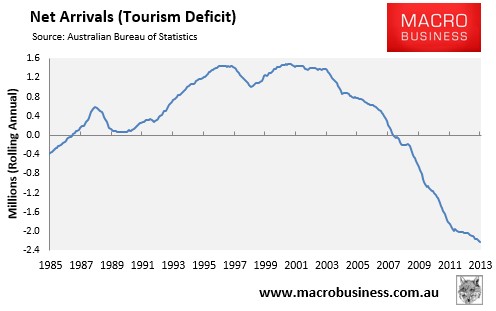
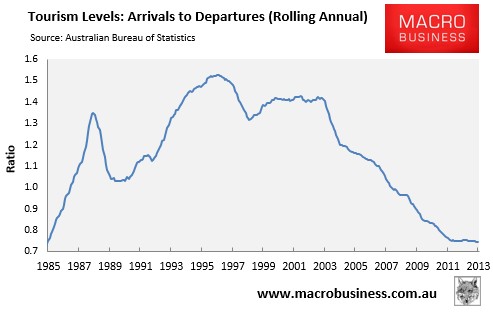
In the month of December 2013, the number of tourism arrivals rose by a seasonally adjusted 6.0% to a new record, whereas the number of tourist departures rose by 4.1% – also a new record.
In the 12 months to December 2013, the annual number of arrivals increased by 9.2% relative to the corresponding period of the prior year, whereas departures rose by 6.6% (see next chart).
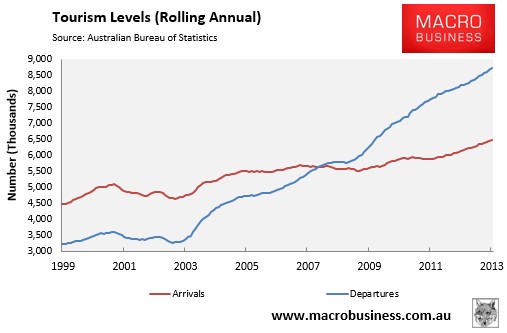
The year to December 2013 was a record for both outbound and inbound tourism. A record 8.73 million Australians holidayed overseas over the year – a 160% increase on 10 years ago (3.37 million). However, this was partly offset by a record 6.49 million inbound tourists arriving in Australia over the year – a 37% increase on a decade ago (4.71 million).
As always, the bogan hotspot of South East Asia (particularly Indonesia and Thailand) remains by far Australia’s favourite holiday destination, receiving a record 243,200 visitors in December, or 32% of Australia’s total departures over the month. This was followed by Oceania (20%), the Americas (13%), North East Asia and North West Europe (each 11%):
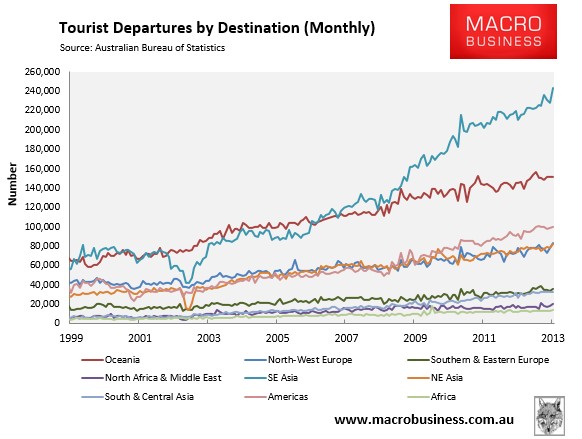
By contrast, the most foreign visitors to Australia came from NE Asia (mostly China), which rebounded following last month’s slump, which accounted for 23% of arrivals in December, followed by Oceania (21%):
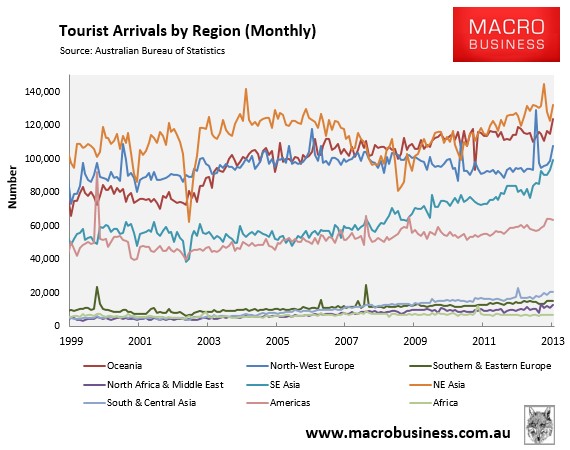
Looking ahead, one would expect that the recent slide in the Australian dollar will reduce Australia’s tourism deficit, although with most travelers booking their trips well in advance, it could take some time to play-out.

